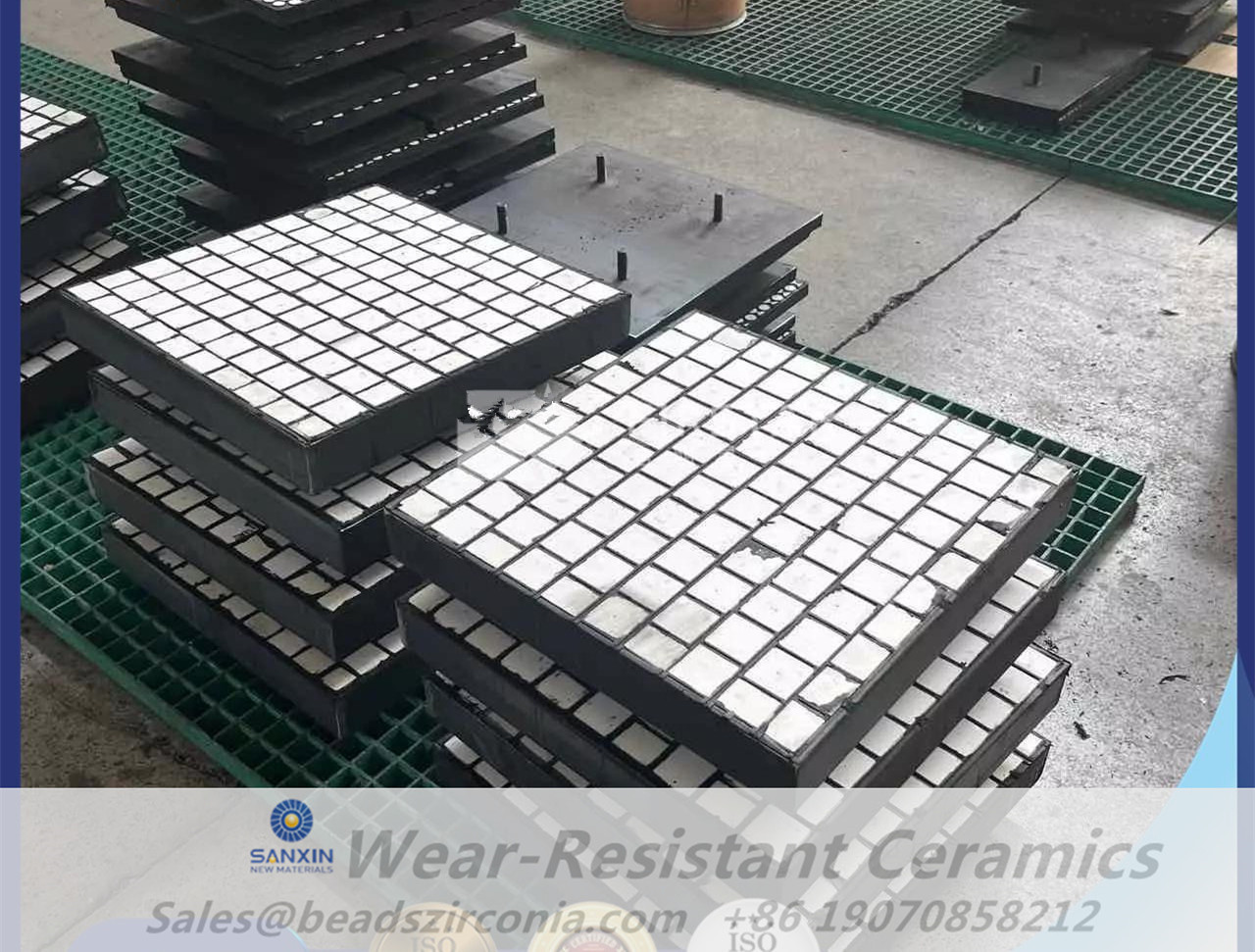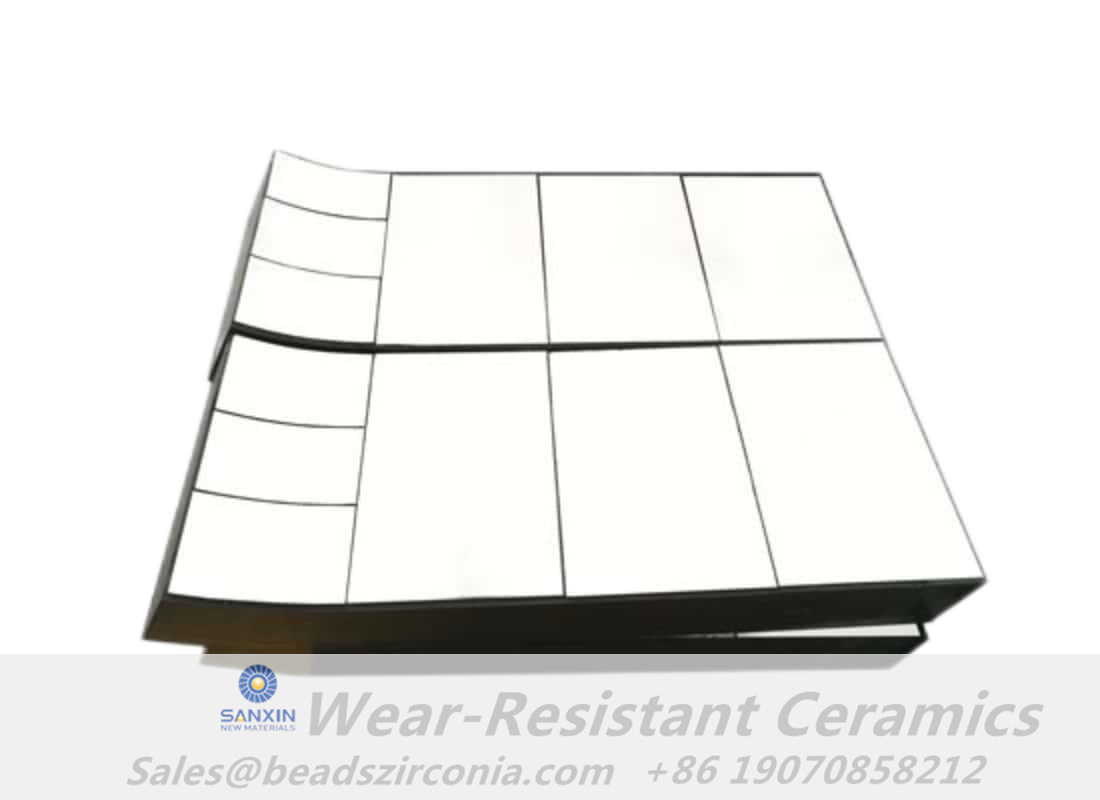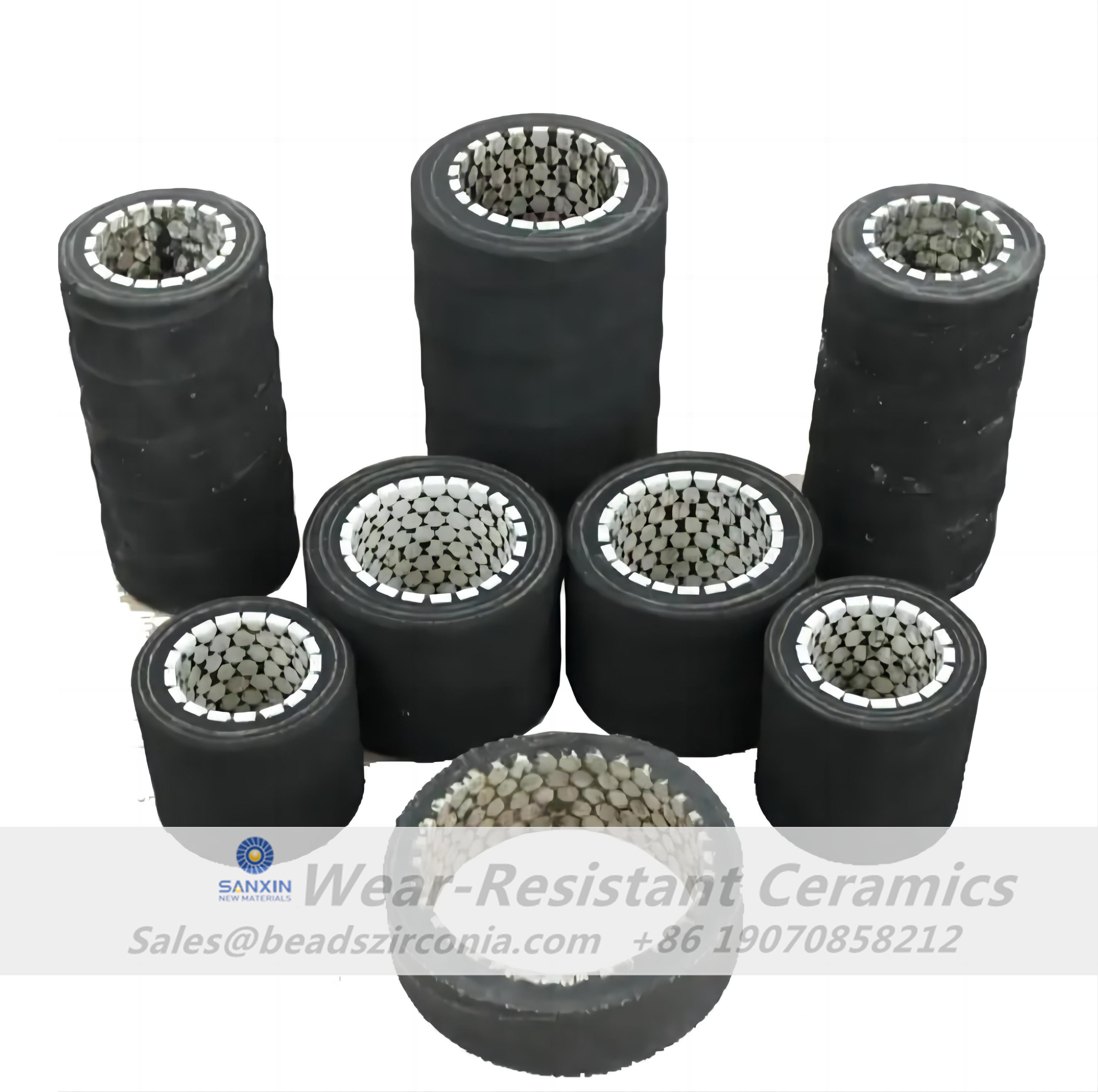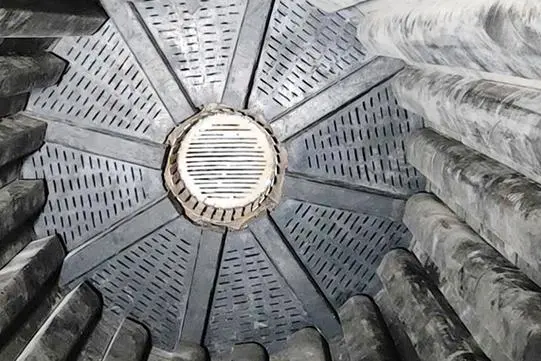Ball mills are critical pieces of equipment in industries such as mining, cement, and chemical processing, where they are used to grind and mix materials into fine powders. The performance of these mills significantly depends on the type of lining used. Liners not only protect the mill structure but also enhance the grinding efficiency and prolong the lifespan of the equipment. Among the various liner materials available, 2-in-1 ceramic-rubber liners and rubber liners are commonly used. This article delves into the differences, advantages, and disadvantages of these two types of liners, emphasizing why 2-in-1 ceramic-rubber liners offer superior performance.

Before diving into a comparison of the two types of liners, it is essential to understand the role that liners play in ball mills.
Protection of Mill Shell: Liners protect the mill shell from the wear caused by the impact and abrasion of the grinding media and the materials being processed. A worn-out liner can lead to structural damage to the mill, necessitating costly repairs and downtime.
Enhancing Grinding Efficiency: The design and material of the liner affect the motion of the grinding media and the overall grinding process. Well-designed liners can improve the efficiency of the grinding operation by optimizing the trajectory of the balls.
Noise Reduction: Liners can also play a role in reducing noise levels generated during milling operations. This is especially important in environments where noise regulations are stringent or where a quieter working environment is desired.
Material Handling: The characteristics of the liner material can influence how materials are handled within the mill, affecting the flow and mixing of the components being ground.
Rubber liners have been a popular choice for ball mills due to their inherent properties, which provide several advantages over other materials.
Rubber liners are typically made from high-quality rubber compounds formulated to withstand the conditions within a ball mill. The properties of rubber that make it suitable for use as a liner include:
Flexibility: Rubber is a flexible material that can absorb energy from impacts. This flexibility helps to protect the mill shell from damage due to high-impact forces.
Resilience: The elastic nature of rubber allows it to return to its original shape after deformation, which helps maintain its structural integrity during operations.
Sound Dampening: The elastic properties also contribute to noise reduction, as rubber can absorb sound waves generated during milling.
Corrosion Resistance: Rubber is inherently resistant to many chemicals and corrosive materials, making it suitable for use in a variety of applications, including those involving corrosive materials.

Impact Resistance: Rubber liners can absorb the energy of the grinding media, which reduces impact forces and protects the mill shell from wear. This characteristic is crucial for applications where the mill handles heavy grinding loads.
Noise Reduction: The elastic properties of rubber contribute to minimizing noise levels during mill operation, creating a quieter working environment. This feature can be particularly beneficial in urban settings or locations with strict noise regulations.
Lightweight: Compared to metal liners, rubber liners are significantly lighter, which makes installation and replacement easier and faster. The lightweight nature also reduces the overall weight of the mill, which can lead to savings in support structures.
Cost-Effective: Rubber liners are generally more affordable than other types of liners and are easy to replace. Their cost-effectiveness makes them an attractive option for many operators.
Customization: Rubber liners can be manufactured in various shapes and sizes to fit specific mill designs, providing flexibility in liner configuration.
Limited Wear Resistance: While rubber liners are effective in low-abrasion settings, they have limited resistance to wear from highly abrasive materials. In applications involving coarse or hard minerals, rubber liners may wear out faster than ceramic alternatives.
Deformation Under Heavy Load: Over time, rubber liners may deform under high-stress conditions, especially in mills handling heavy grinding loads. This deformation can lead to decreased performance and a shorter lifespan for the liners.
Limited Heat Resistance: Rubber liners may not perform well in high-temperature environments. Excessive heat can cause the rubber to deteriorate more quickly, resulting in a shorter service life.
Potential for Chemical Degradation: Certain chemicals can degrade rubber over time, limiting the applicability of rubber liners in specific processes where chemical exposure is a concern.
2-in-1 ceramic-rubber liners combine the flexibility and impact absorption of rubber with the high wear resistance of ceramic materials. These innovative liners consist of a rubber base with ceramic tiles embedded in it, providing a hybrid solution that maximizes the advantages of both materials.
The construction of 2-in-1 ceramic-rubber liners typically includes:
Rubber Base: The rubber base provides flexibility, impact absorption, and noise reduction. This component is crucial for protecting both the ceramic tiles and the mill shell from damage.
Ceramic Tiles: Embedded ceramic tiles are strategically placed within the rubber matrix to enhance wear resistance. The hardness of the ceramic material allows it to withstand abrasive materials, significantly extending the liner's service life.
Superior Wear Resistance: The embedded ceramic tiles provide significant wear resistance, making these liners suitable for grinding hard and abrasive materials, such as minerals, ores, and cement. The ceramic layer protects the rubber base, leading to a longer overall lifespan.
Impact Absorption: The rubber component of the liner absorbs impact forces, which protects both the ceramic tiles and the mill shell from damage. This combination allows the liner to withstand high-energy impacts better than ceramic-only liners.
Longer Service Life: The synergy of ceramic's wear resistance and rubber's flexibility means that 2-in-1 liners last much longer than standard rubber liners. This durability results in reduced downtime for maintenance and lower overall replacement costs.
Improved Energy Efficiency: With reduced wear and better protection of the grinding media and mill internals, 2-in-1 ceramic-rubber liners help maintain optimal grinding conditions for longer. This leads to improved energy efficiency and higher throughput, making them ideal for high-demand applications.
Noise Reduction: Similar to rubber liners, the rubber portion of 2-in-1 liners provides effective noise dampening, contributing to a quieter operational environment. This characteristic is advantageous in workplaces where noise levels must be controlled.
Adaptability: The design of 2-in-1 liners allows for adjustments in the size and arrangement of ceramic tiles, enabling customization based on specific mill configurations and operational requirements.

Higher Initial Cost: The initial investment for 2-in-1 ceramic-rubber liners is typically higher compared to rubber liners due to the inclusion of ceramic materials. However, the longer service life often offsets this initial cost over time, resulting in overall savings.
Heavier Weight: Although 2-in-1 liners are not as heavy as metal liners, they are generally heavier than rubber liners alone because of the ceramic tiles. This can make installation and handling slightly more challenging.
Complex Installation: The dual-material structure can require more careful installation and alignment to ensure the ceramic tiles are correctly positioned. This need for precision may increase installation time and complexity.
Potential for Tile Damage: While ceramic tiles are durable, they can be prone to cracking or chipping under certain conditions. This risk may necessitate regular inspections and potential repairs.
Wear Resistance: The primary advantage of 2-in-1 ceramic-rubber liners is their superior wear resistance, especially in environments with abrasive materials. While rubber liners are effective in low-abrasion settings, they wear out more quickly in harsh conditions.
Impact Resistance: Both liner types offer good impact resistance; however, the combination of ceramic and rubber in 2-in-1 liners allows them to handle both abrasion and impact forces more effectively than rubber liners alone.
Service Life: 2-in-1 liners generally have a much longer service life due to the protective ceramic tiles. In contrast, rubber liners require more frequent replacements in high-wear environments, leading to increased maintenance costs.
Cost: Rubber liners are more cost-effective initially, but 2-in-1 ceramic-rubber liners can prove more economical over time due to their durability and reduced need for replacements.
Applications: Rubber liners are suitable for low- to medium-abrasion applications, such as coal grinding or softer ores, while 2-in-1 liners are ideal for heavy-duty applications involving hard, coarse materials like minerals and metals.
Installation and Handling: While rubber liners are easier to install and handle due to their lightweight nature, 2-in-1 ceramic-rubber liners may require more effort during installation because of their weight and complexity.
The choice of liner type is heavily influenced by the specific application and the materials being processed. Understanding the application helps in determining which liner type is most suitable.
In the mining sector, ball mills are used to grind ore and extract valuable minerals. The choice of liner is critical due to the abrasive nature of the materials involved.
Rubber Liners: In operations involving softer ores or low-abrasion materials, rubber liners may be sufficient. Their cost-effectiveness makes them a popular choice for operations with less wear.
2-in-1 Ceramic-Rubber Liners: For harder ores or applications with significant abrasion, 2-in-1 ceramic-rubber liners are preferred. Their superior wear resistance ensures that they can withstand the harsh conditions prevalent in mining operations, leading to lower replacement costs and less downtime.
The cement industry relies heavily on ball mills for grinding clinker and other materials. The choice of liner affects both efficiency and product quality.
Rubber Liners: In some cement grinding applications, particularly those involving softer materials, rubber liners may be used due to their noise reduction properties and ease of installation.
2-in-1 Ceramic-Rubber Liners: For grinding harder materials and achieving finer particle sizes, 2-in-1 liners are more suitable. Their ability to handle high wear and maintain grinding efficiency makes them a preferred choice for many cement manufacturers.
Ball mills are also used in chemical processing to mix and grind materials. The choice of liner can influence product purity and the efficiency of chemical reactions.
Rubber Liners: In applications involving less abrasive materials, rubber liners may be sufficient. Their chemical resistance is beneficial in preventing contamination of the product.
2-in-1 Ceramic-Rubber Liners: For processes involving abrasive or reactive materials, 2-in-1 liners are advantageous due to their wear resistance and ability to handle a wider range of materials without degradation.
Ball mills are employed in recycling processes to grind materials like glass, plastics, and metals. The type of liner can impact both the efficiency of the grinding process and the quality of the recycled material.
Rubber Liners: For less abrasive materials, rubber liners can provide effective grinding and noise reduction.
2-in-1 Ceramic-Rubber Liners: In recycling applications involving harder materials or mixed waste, 2-in-1 liners offer superior wear resistance, ensuring a longer service life and maintaining grinding efficiency.
To evaluate the effectiveness of different liner types, several performance metrics can be considered:
Wear Rate: The wear rate of a liner is a critical performance metric. It quantifies how quickly the liner material wears away under operational conditions. Lower wear rates are desirable, as they indicate longer service life and reduced maintenance costs.
Impact Resistance: Measuring the impact resistance of liners helps determine how well they can withstand the forces generated during grinding. Tests can involve subjecting the liner to repeated impacts and assessing the degree of damage or deformation.
Energy Efficiency: The energy efficiency of a mill can be influenced by the type of liner used. Evaluating how different liners affect energy consumption during grinding can provide insights into their performance. More efficient liners can lead to lower operating costs.
Noise Levels: Noise reduction capabilities are an essential consideration in many industries. Measuring the noise levels generated during milling operations with different liners can help assess their effectiveness in creating a quieter working environment.
Cost-Effectiveness: Analyzing the total cost of ownership, including initial costs, maintenance, and replacement costs, helps determine the cost-effectiveness of each liner type over time. A liner that may have a higher initial cost could prove more economical in the long run if it offers longer service life and lower maintenance costs.

Examining real-world applications and performance can provide further insights into the advantages and disadvantages of rubber liners and 2-in-1 ceramic-rubber liners.
A mining operation using rubber liners in their ball mills noticed increased downtime due to frequent liner replacements. As the ore became harder and more abrasive, the wear rate of the rubber liners increased significantly. After evaluating options, the company decided to switch to 2-in-1 ceramic-rubber liners.
Results:
The wear rate decreased by approximately 50%.
Maintenance downtime was reduced by 30%, leading to increased productivity.
Overall costs associated with liner replacements were cut by 25%, justifying the initial investment in ceramic-rubber liners.
In a cement plant, the management faced challenges with noise levels and inconsistent grinding efficiency. The plant was using rubber liners, which were effective but resulted in excessive noise and a shorter lifespan.
After implementing 2-in-1 ceramic-rubber liners, the plant reported significant improvements:
Results:
Noise levels dropped by 40%, leading to a more comfortable working environment.
The service life of the liners increased by 60%, resulting in fewer replacements.
Energy consumption during grinding decreased, enhancing overall energy efficiency.
With increasing awareness of environmental issues, the choice of liner materials also has ecological implications.
Sustainability: The manufacturing process of rubber and ceramic materials can have different environmental impacts. Rubber liners are typically made from synthetic compounds, which may involve the use of petrochemicals. In contrast, ceramic materials can often be produced from naturally occurring minerals, potentially offering a more sustainable option.
Recyclability: At the end of their service life, the recyclability of liner materials can influence environmental performance. Rubber liners are often more challenging to recycle due to their composite nature. Conversely, ceramic materials can sometimes be repurposed or recycled, reducing waste.
Noise Pollution: By reducing noise levels during milling operations, liners that provide better noise dampening (such as rubber and 2-in-1 liners) can help mitigate noise pollution, benefiting both the environment and worker health.
As industries continue to evolve, new trends in liner technology and materials may emerge.
Advanced Materials: Research into advanced composite materials could lead to the development of even more effective liner solutions. These materials may combine the best properties of rubber, ceramics, and other materials to enhance performance and durability.
Smart Liners: The integration of technology into liner design could result in "smart" liners that monitor wear in real-time. Sensors embedded in the liners could provide data on wear rates and operational conditions, allowing for proactive maintenance and improved efficiency.
Sustainable Solutions: As sustainability becomes increasingly important, the development of environmentally friendly liners made from recycled or biodegradable materials may gain traction. Innovations in this area could reduce the environmental footprint of ball mill operations.
Custom Liners: The demand for tailored solutions that address specific operational needs may drive the development of custom liners designed for particular applications or materials. This trend may result in enhanced performance and efficiency.
Both rubber liners and 2-in-1 ceramic-rubber liners play vital roles in ball mill operations, depending on the nature of the materials being processed and the specific operational needs. While rubber liners offer initial cost advantages and are suitable for less abrasive applications, 2-in-1 ceramic-rubber liners excel in high-wear, high-impact environments where longevity and wear resistance are critical.
For industries seeking to maximize mill efficiency, reduce downtime, and minimize maintenance costs, investing in 2-in-1 ceramic-rubber liners is a worthwhile consideration. As technology continues to advance and industries adapt to changing demands, the future of ball mill liners will likely see further innovations, offering even better performance and sustainability in milling operations.

Submit your demand,
we will contact you ASAP.

Sanxin New Materials Co., Ltd. focus on producing and selling ceramic beads and parts such as grinding media, blasting beads, bearing ball, structure part, ceramic wear-resistant liners, Nanoparticles Nano Powder

